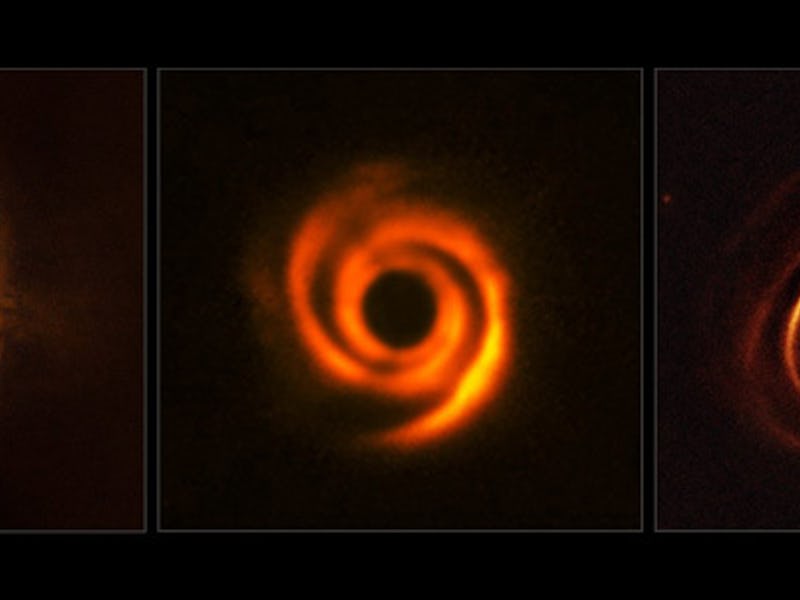Check Out These Protoplanetary Disks Slowly Becoming Planets
Turns out, things might be more symmetrical than we thought.

Protoplanetary disks are celestial bodies found around young stars, which will eventually be sculpted into round spherical as we know them. They’re the subjects of the European Southern Observatory’s Spectro-Polarimetric High-contrast Exoplanet REsearch instrument, which has been somewhat forcibly maneuvered into the acronym SPHERE. On Wednesday, the ESO released new images and data, captured by three teams of astronomers using SPHERE, of what those young solar systems look like in action.
SPHERE’s cutting-edge precision is able to deliver the kind of detail we need in order to better understand the evolutionary processes of these nascent stars and planets. It has adaptive optics that compensate for visual distortion and a coronagraph that keeps the light from the central star from blowing out the rest of the image. It can also isolate light coming from the star and separate it from the features forming in the disk to make for a more accurate reading.
SPHERE’s first observation, or “first light,” was in June 2014. It uses direct imaging — basically, taking highly detailed pictures of the exoplanets scientists have their eye on. Getting usable direct imaging data from protoplanetary disks is no small feat (though it’s not easy to capture regular planets either).
Concentric rings on the disk around the star RX J1615.
Protoplanetary disks aren’t actually solid — the term refers to expansive clouds of stellar gas and dust that compact into planets over time. But the specifics of that process, including how some planets end up with rings or arms, still aren’t known to us. A SPHERE team hailing from the Netherlands obtained images of rings already forming in an especially young disk — a rare and valuable set of data. Observation of a second symmetrical system soon followed, which is important because prior to this we were mostly finding disks with asymmetrical features — this might mean there are more of the former out there than we thought.
Arm-like spiral structures on the disk around star HD 135344B.
The teams also observed cool phenomena like a “large central cavity and two prominent spiral arm-like structures,” which should eventually develop into something resembling Jupiter. They were also lucky enough to capture images of four separate dark streaks — shadows of young planetary material — one of which changed in shape between observations, meaning SPHERE is getting the data of it dynamically evolving in real time. The takeaway from all of this is basically that protoplanetary spheres are full of surprises — tantalizing, immensely rich fields of study that we now have the technology to better explore.